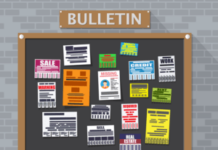With spring and summer comes the burning season from small recreational campfires to large conservation reserve program (CRP) burning. The Department of Natural Resources (DNR) will issue different fire stages, often referred to as yellow flag, red flag, etc. for burning within Polk County and the state as a whole.
Within the City of Crookston, fires are primarily limited to recreational campfires explains Crookston Firefighter Bob Magsam. “Every year we run into issues with what is legal, what is not legal within the City of Crookston,” said Magsam. “Many years ago the City Council adopted a City Ordinance that only allowed recreational fires within in the City of Crookston, with a few exceptions. A recreational fire, which is a campfire that is no larger than three feet across and extends no more than three feet in the air. That is the allowed within the city limits with no permits.”
Furthermore, Magsam says fires within the city are prohibited from being a smoke nuisance to neighbors. “As the State of Minnesota and the DNR put on burn restrictions in very dry areas it will also sometimes be on recreational fires,” said Magsam. “The material in these recreational fires must be dry firewood. That rules out leaves, grass, green branches, and smoke causing materials. If you are burning in your backyard if you’re causing a smoke nuisance and that gets called into the fire department we will show up and ask you to put that fire out. Basically, the city just asks that you be respectful to your neighbors when out enjoying a little campfire in your backyard.”
In select cases, open burning permits can be issued within city limits. According to Crookston City Code 94.63A open permits may be issued only for the following purposes:
- Elimination of fire or health hazard that cannot be abated by other practical means.
- Ground thawing for utility repair and construction.
- Disposal of vegetative matter for managing forest, prairie or wildlife habitat, and in the development and maintenance of land and rights-of-way where chipping, composting, landspreading or other alternative methods are not practical.
- Disposal of diseased trees generated on site, diseased or infected nursery stock, diseased bee hives.
- Disposal of unpainted, untreated, non-glued lumber and wood shakes generated from construction, where recycling, reuse, removal or other alternative disposal methods are not practical.
- Recreation fire for public purpose.
For those burns as well as burning in the greater Crookston area, the Crookston Fire Department will issue permits on behalf of the DNR. “Anytime you’re going to have a fire, outside of a recreational fire or small campfire, all open burning requires a burning permit in the State of Minnesota,” said Magsam. “We issue those burn permits for DNR out of the Crookston Fire Department.”
Magsam says the DNR will update their fire danger rating on a daily basis and sometimes hourly as conditions change during the summer months. “What the red flag, yellow flag warnings pertains to every day is an analysis the DNR does of the weather conditions, how dry it is, the threat of fire, things along that line,” said Magsam. “They issue the requirements or recommendations for burning per county. As we look at the map today we sit in a yellow warning. That yellow warning states we have a high risk of fire. It’s not extreme, extreme is red which means it’s super, super dry and restrictions will go on. Currently, we’re yellow, we’re on a high warning and burning permits are allowed. Again, if you’re going to have an open fire within the county you must obtain a burn permit from either your local fire department or the DNR themselves which allows you to burn.”
DNR Fire Rating
- Green Flag – fires are not easily started – no permit required
- Blue Flag – fires start easily and spread at a moderate rate – burning permits required
- Yellow Flag – fires start easily and spread at a fast rate – restricted burning by variance permit only
- Orange Flag – fires start very easily and spread at a very fast rate – no burning permits, campfires allowed
- Red Flag – fire situation is explosive and can result in extensive property damage – no permits and no campfires.






